What’s Inside the Hole? A Review of European Dendrolimnetic Moth Flies (Diptera: Psychodidae: Psychodinae)
Abstract
1. Introduction
2. Material and methods
2.1. Geographic Scope
2.2. Literature Records
2.3. Sampling
2.4. Study of the Collected Material and Terminology
2.5. Genetics
3. Results
| Taxon | Tree Species | Reference |
|---|---|---|
| Clogmia albipunctata (Williston, 1893) | Oak (Quercus sp.), not specified | [35,36] |
| Clytocerus xylophilus Vaillant, 1983 | Lime tree (Tilia sp.) | [37] |
| Lepiseodina tristis (Meigen, 1830) | Ash (Fraxinus sp.), beech (Fagus sp.), birch (Betula sp.), cherry (Prunus sp.), elm (Ulmus sp.), maple (Acer sp.), oak (Quercus sp.), mulberry (Morus sp.), lime (Tilia sp.), not specified, ** Populus nigra L. | [13,22,25,36,38] |
| Lepiseodina rothschildi (Eaton, 1912) | Maple (Acer sp.), oak (Quercus sp.), not specified | [9,13,38] |
| Lepiseodina latipennis (Sarà, 1953) | ** Maple tree (Acer sp.), ** Oak (Quercus sp.) | |
| Pneumia canescens (Meigen, 1804) | Not specified | [18,25] |
| Pneumia trivialis (Eaton, 1893) | Not specified | [22,25] |
| Psychoda alternata Say, 1824 | Not specified | [23] |
| Psychoda cinerea Banks, 1894 | Apple (Malus sp.), oak (Quercus sp.), ** Hornbeam (Carpinus or Ostrya sp.) | [25] |
| Psychoda minuta Banks, 1894 | Maple (Acer sp.), oak (Quercus sp.) | [25] |
| Telmatoscopus advena (Eaton, 1893) | Ash (Fraxinus sp.), birch (Betula sp.), elm (Ulmus sp.), oak (Quercus sp.), sycamore (Platanus sp.) | [13,22,25,38] |
| Telmatoscopus thuringicus Beran, Doczkal, Pfister & Wagner, 2010 | Not specified (assumption of development) | [5] |
| Telmatoscopus laurencei Freeman, 1953 | Lime tree (Tilia sp.) | [39] |
3.1. Key to the Males of European Psychodinae Genera Found in Dendrotelmata
- 1.
- Antenna with at least flagellomeres 2–10 nodiform, divided into a basal nod and a distal neck (Figure 1B,D)…3
- -
- Antenna with flagellomeres cylindrical or fusiform (Figure 1A,C)…2
- 2.
- Cornicula (everted sac-shaped structures on the back surface of the head (presumed scent organs); also known as patagia) usually present; antennal scape more than three times longer than pedicel; flagellomere 1 with a distal brush of wavy setae (Figure 1C)…Clytocerus Eaton, 1904
- -
- Cornicula always absent; antennal scape less than three times the length of pedicel; flagellomere 1 without a distal brush of wavy setae (Figure 1A)…Pneumia Enderlein, 1935
- 3.
- Ascoids with anterior and posterior branches (ascoids Y-shaped) (Figure 1D); hypopods of males with only one apical tenaculum…Psychoda Latreille, 1797
- -
- Ascoids with a single curved branch or carrying only anterior branches (ascoids digitiform and not Y-shaped) (Figure 1B); hypopods of males with four or more apical tenacula…4
- 4.
- -
- 5.
- -
3.2. Systematic Assessment
- 1.
- Gonostyli longer than gonocoxites…2
- -
- Gonostyli about half the length of gonocoxites (Figure 3A)… L. rothschildi
- 2.
- Hypandrium narrow, with a small medial projection on basal margin (Figure 7A); alveoli in gonocoxites restricted in two or three irregular rows in the apical margin (Figure 9A and Figure 10B); gonostyli with alveoli on the base (Figure 9A and Figure 10B); two parameres strongly sclerotized (Figure 7C)… L. tristis
- -
- 1.
- The scape/pedicel proportion is 2:1 in Kvirosheinoscopus (1:1 in Sciria); however, even while the proportion of scape/pedicel length proposed by Ježek [84] is 2:1 in T. ussuricus, this is not the case for T. bartai where it is 1:1.
- 2.
- The ascoids are very long, thin and coiled in Krivosheinoscopus (large, flat, leaf or hood-shaped in Sciria). This character is contradicted by Telmatoscopus laurencei [38], which has digitiform ascoids and coiled, and these character states are polymorphic in Vaillantodes Wagner, 2001 and Panimerus Eaton, 1913. Intermediary forms also occur in some genera of Telmatoscopoids. Due to widespread polymorphism of this character we do not consider this a reliable genus-level character unless supported by other, independent lines of evidence.
- 3.
- The first palpal segment very short and keg-shaped in Krivosheinoscopus (long and cylindrical in Sciria). This character is variable inside the genus Telmatoscopus (e.g., long in Telmatosocpus advena and shorter in Telmatoscopus thuringicus Beran, Doczkal, Pfister & Wagner, 2010), therefore it is here considered as intrageneric variability, and thus not a diagnostic character.
- 4.
- The position of the radial and medial forks of wing venation, at the same distance in Krivosheinoscopus (medial fork distad to radial fork in Sciria). This is another character presenting as variable within the genus Telmatoscopus (e.g., medial fork distal in T. advena, medial fork basal in T. thuringicus, forks at the same level in Telmatoscopus bartai).
- 5.
- Two pairs of protuberances in the aedeagal complex in Krivosheinoscopus (one pair in Sciria). According to the homologization of [83], the absence of protruding parameres in Telmatoscopus are not due to absence of parameres, they are present as transverse sclerites within the aedeagal–parameral complex. The difference between T. advena, T. bartai and T. ussuricus in the parameres is a question of degree of development rather than a clear-cut presence/absence question, and intermediate cases occur in Nearctic species (e.g., T. patibulus Quate).
- 6.
- The hypoproct has a terminal projection, long and narrow in Krivosheinoscopus (without a terminal projection, triangular in Sciria). This character is contradicted by Telmatoscopus bartai comb. nov. where the hypoproct is triangular, and not thin and elongated.
- 1.
- More than 30 tenacula; tenacula not restricted to the apical portion of hypopods, scattered in all the hypopods length (as in [5] (Figure 10))…T. thuringicus
- -
- Less than 30 tenacula; tenacula restricted to the apical portion of hypopods and not scattered in the hypopods length…2
- 2.
- -
- Ascoids narrow, never broader than 1/3 of the width of the basal node of flagellomere carrying them; parameres coiled or out curved (Figure 13C)…3
- 3.
- Parameres coiled with strong incurvation after the coil and apical tips hook-out curved (as in [38] (Figure 2D)); hypopods with less than 20 tenacula…T. laurencei
- -
- Parameres not coiled and out curved (Figure 13C); hypopods with more than 20 tenacula…T. bartai
4. Discussion
5. Conclusions
Supplementary Materials
Author Contributions
Funding
Institutional Review Board Statement
Informed Consent Statement
Data Availability Statement
Acknowledgments
Conflicts of Interest
References
- Varga, L. Ein interessanter Biotop der Bioconose von Wasserorganismen. Biol. Zentralbl. 1928, 48, 143–162. [Google Scholar]
- Kitching, R.K. An Ecological Study of Water-Filled Tree-Holes and their Position in the Woodland Ecosystem. J. Anim. Ecol. 1971, 40, 281–302. Available online: https://www.jstor.org/stable/pdf/3247.pdf (accessed on 5 April 2022). [CrossRef]
- Kitching, R.L. Food Webs and Container Habitats: The Natural History and Ecology of Phytotelmata; Cambridge University Press: Cambridge, UK, 2000. [Google Scholar]
- Kirsch, J.J.; Sermon, J.; Jonker, M.; Asbeck, T.; Gossner, M.M.; Petermann, J.S.; Basile, M. The use of water-filled tree holes by vertebrates in temperate forests. Wildl. Biol. 2021, 1, 1–4. [Google Scholar] [CrossRef]
- Beran, B.; Doczkal, D.; Pfister, K.; Wagner, R. Two new species of Psychodidae (subfamilies: Trichomyiinae and Psychodinae) from Germany associated with decaying wood. Zootaxa 2010, 2386, 59–64. [Google Scholar] [CrossRef]
- Fish, D.; Carpenter, S.R. Leaf litter and larval mosquito dynamics in tree-hole ecosystems. Ecology 1982, 63, 283–288. [Google Scholar] [CrossRef]
- Schmidl, J.; Sulzer, P.; Kitching, R.L. The insect assemblage in water-filled tree-holes in a European temperate deciduous forest: Community composition reflects structural, trophic, and physicochemical factors. Hydrobiologia 2008, 598, 285–303. [Google Scholar] [CrossRef]
- Gossner, M.M. A three-year study of the phenology of insect larvae (Coleoptera, Diptera) in water-filled tree holes in the canopy of a beech tree. Eur. J. Entomol. 2018, 115, 524–534. [Google Scholar] [CrossRef]
- Oboňa, J.; Ježek, J.; Kanasová, K.; Mango, P. Hiding in plain sight: New records and endangered flies (Diptera) from a tree-hole in an urban park (Prešov, Slovakia). Acta Musei Sil. Sci. Nat. 2021, 70, 75–81. [Google Scholar] [CrossRef]
- Oboňa, J.; Ježek, J.; Fogašová, K.; Manko, P.; Korneyev, V.A. The moth fly Clogmia albipunctata (Diptera: Psychodidae) in Ukraine. Ukr. Entomofaunistyka 2021, 12, 13–16. [Google Scholar]
- Duckhouse, D.A. Non-phlebotomine Psychodidae (Diptera, Nematocera) of southern Africa. II. Neoarisemus and the brunettoid and telmatoscopoid genera. Ann. Natal Mus. 1978, 23, 305–359. [Google Scholar]
- Withers, P. Moth Flies (Diptera: Psychodidae). Dipter. Dig. 1989, 4, 1–83. [Google Scholar]
- Withers, P. Some further records of Irish rot-hole moth-flies (Diptera: Psychodidae), with a first record for Telmatoscopus rothschildii, and a figure of the male terminalia of that species. Ir. Nat. J. 1989, 23, 16–17. [Google Scholar]
- Curler, G.R.; Moulton, K. A review of Nearctic Clytocerus (Diptera: Psychodidae: Psychodinae). Can. Entomol. 2012, 144, 186–195. [Google Scholar] [CrossRef]
- Kvifte, G.M.; Wagner, R. Psychodidae (Sand Flies, Moth Flies or Owl Flies). In Manual of Afrotropical Diptera. Nematocerous Diptera and Lower Brachycera; Kirk-Spriggs, A.H., Sinclair, B.J., Eds.; South African National Biodiversity Institute: Pretoria, South Africa, 2017; Volume 2, pp. 607–632. [Google Scholar]
- Feuerborn, H.J. Der sexuelle Reizapparat (Schmuck-, Duft- und berührungsorgane) der Psychodiden nach biologischen und physiologischen Gesichtspunkten untersucht. Arch. Nat. A 1922, 4, 1–137. [Google Scholar]
- Feuerborn, H.J. Die Larven der Psychodiden oder Schmetterlingsmücken. ein beitrag zur “Ökologie des Feuchten”. Int. Ver. Theor. Angew. Limnol. Verh. 1923, 1, 181–213. [Google Scholar] [CrossRef]
- Mayer, K. Zür kenntnis der buchenhöhlenfauna. Arch. Hydrobiol. 1938, 33, 388–400. [Google Scholar]
- Röhnert, U. Wassererfüllte baumhöhlen und ihre besiedlung. ein beitrag zur Fauna dendrolimnetica. Arch. Hydrobiol. 1950, 44, 472–516. [Google Scholar]
- Jung, H.F. Beiträge zur biologie, Morphologie und Systematik der europäischen Psychodiden (Diptera). Deut. Entomol. Z. 1956, 3, 97–257. [Google Scholar]
- Mirouse, R.; Vaillant, F. Les Telmatoscopus des arbres creux (Dipteres Psychodidae). L’Entomologiste 1960, 16, 7–16. [Google Scholar]
- Withers, P. Some moth-flies (Diptera: Psychodidae) reared from tree rot-holes in Ireland including a first breeding record of Telmatoscopus advenus. Ir. Nat. J. 1987, 22, 201–202. [Google Scholar]
- Vaillant, F. Les Psychodinae dendrolimnophiles et dendrolimnobiontes palearctiques et nearctiques (insecta, Diptera, nematocera, Psychodidae). Spixiana 1989, 12, 193–208. [Google Scholar]
- Vaillant, F. Les Diptères Psychodidae dendrolimnobiontes du sud-est de la France et leur microendémisme. Ann. Soc. Entomol. Fr. 1990, 26, 371–379. [Google Scholar]
- Oboňa, J.; Ježek, J. First records of dendrolimnetic moth flies (Diptera: Psychodidae) from Slovakia. Klapalekiana 2012, 48, 279–289. [Google Scholar]
- Geiger, M.F.; Astrin, J.J.; Borsch, T.; Burkhardt, U.; Grobe, P.; Hand, R.; Hausmann, A.; Hohberg, K.; Krogmann, L.; Lutz, M.; et al. How to tackle the molecular species inventory for an industrialized nation—Lessons from the first phase of the German Barcode of Life initiative GBOL (2012–2015). Genome 2016, 59, 661–670. [Google Scholar] [CrossRef] [PubMed]
- De Jong, Y.; Verbeek, M.; Michelsen, V.; de Place Bjørn, P.; Los, W.; Steeman, F.; Bailly, N.; Basire, C.; Chylarecki, P.; Stloukal, E.; et al. Fauna Europaea—All European animal species on the web. Biodivers. Data J. 2014, 2, e4034. [Google Scholar] [CrossRef]
- Ibáñez-Bernal, S. Phlebotominae (Diptera: Psychodidae) de Mexico. V. Clave ilustrada para la identificacion de los machos de Lutzomyia França. Folia Entomol. Mex. 2005, 44, 49–66. [Google Scholar]
- Cumming, J.M.; Wood, D.M. 3. Adult morphology and terminology. In Manual of Afrotropical Diptera. Introductory Chapters and Keys to Diptera Families; Kirk-Spriggs, A.H., Sinclair, B.J., Eds.; SANBI Graphics & Editing: Pretoria, South Africa, 2017; Volume 1, pp. 89–133. [Google Scholar]
- Kvifte, G.M.; Wagner, R. Review of Neurosystasis Satchell, with two new species from Cuba and a discussion of cerci and surstyli in Psychodinae (Diptera: Psychodidae). Zootaxa 2017, 4306, 81–90. [Google Scholar] [CrossRef]
- Kotrba, M. Morphology and terminology of the female postabdomen. In Contributions to a Manual of Palaearctic Diptera; Papp, L., Darvas, B., Eds.; Science Herald: Budapest, Hungary, 2000; Volume 1, pp. 75–84. [Google Scholar]
- De Almeida, N.; Oliveira, R.S.; Brazil, B.G.; Soares, M.J. Pattern of exochorion ornaments on eggs of seven South American species of Lutzomyia sand flies (Diptera: Psychodidae). J. Med. Entomol. 2004, 41, 819–825. [Google Scholar] [CrossRef]
- Folmer, O.; Black, M.; Hoeh, W.; Lutz, R.; Vrijenhoek, R. DNA primers for amplification of mitochondrial cytochrome c oxidase subunit I from diverse metazoan invertebrates. Mol. Mar. Biol. Biotechnol. 1994, 3, 294–299. [Google Scholar]
- Astrin, J.J.; Stüben, P.E. Phylogeny in cryptic weevils: Molecules, morphology and new genera of western Palaearctic Cryptorhynchinae (Coleoptera: Curculionidae). Invertebr. Syst. 2008, 22, 503–522. [Google Scholar] [CrossRef]
- Ježek, J.; Lukáš, J.; Kvifte, G.M.; Oboňa, J. New faunistic records of non-biting moth flies (Diptera: Psychodidae) from the Czech Republic and Slovakia. Klapalekiana 2012, 48, 121–126. [Google Scholar]
- Kvifte, G.M.; Ivković, M.; Klarić, A. New records of moth flies (Diptera: Psychodidae) from Croatia, with the description of Berdeniella keroveci sp. nov. Zootaxa 2013, 3737, 57–67. [Google Scholar] [CrossRef] [PubMed]
- Vaillant, F. 9d. Psychodidae-Psychodinae. In Die Fliegen der Palaearktischen Region 2; Lindner, E., Ed.; Leif.. 328, E. Schweizerbart’scheVerlagsbuchhandlung: Stuttgart, Germany, 1983; pp. 311–358. [Google Scholar]
- Kroča, J.; Ježek, J. Moth Flies (Diptera: Psychodidae) of the Moravskoslezské Beskydy Mts and Podbeskydská pahorkatina Upland, Czech Republic, II. Acta Musei Sil. Sci. Nat. 2019, 68, 201–232. [Google Scholar] [CrossRef]
- Freeman, P. Two new species of Psychodidae (Diptera, Nematocera) from Britain. Proc. R. Entomol. 1953, 22, 69–71. [Google Scholar] [CrossRef]
- Ibáñez-Bernal, S. New Records and Descriptions of Mexican Moth Flies (Diptera: Psychodidae, Psychodinae). Trans. Am. Entomol. Soc. 2008, 134, 87–131. [Google Scholar] [CrossRef]
- Quate, L.W. A revision of the Psychodidae (Diptera) in America north of Mexico; University of California Press: Berkeley, CA, USA, 1955; Volume 10, pp. 103–273. [Google Scholar]
- Enderlein, G. Klassifikation der Psychodiden (Dipt.). Deut. Entomol. Z. 1937, 1936, 81–112. [Google Scholar]
- Wagner, R. Fauna Europaea: Psychodidae. In Fauna Europaea: Diptera: Nematocera; Fauna Europea Version 1.1; de Jong, Y., Ed.; 2004; Available online: http://www.faunaeur.org (accessed on 5 February 2022).
- Boumans, L.; Zimmer, J.-Y.; Verheggen, F. First record of the ‘bathroom mothmidge’ Clogmia albipunctata, a conspicuous element of the Belgian fauna that went unnoticed (Diptera: Psychodidae). Phegea 2009, 37, 153–160. Available online: http://dare.uva.nl/document/2/71517 (accessed on 5 April 2022).
- Sivell, D.; Irwin, T. Clogmia albipunctata (Williston) (Diptera, Psychodidae) in London. Dipter. Dig. 2016, 23, 111–115. [Google Scholar]
- Salmela, J.; Keskitalo, M.; Metsälä, P. Perhossääski Clogmia albipunctata (Williston) havaittu Suomesta (Diptera, Psychodidae). Sahlbergia 2019, 25, 15–17. [Google Scholar]
- Kvifte, G.M. Citizen science reveals the establishment of the invasive container breeder Clogmia albipunctata in Sweden and Denmark (Diptera: Psychodidae). Manag. Biol. Invasions, 2022; accepted. [Google Scholar]
- Evenhuis, N.L. Reassessment of Clytocerus Eaton, 1904 (Diptera: Psychodidae) based on a recently discovered type species designation by Malloch in 1907, with a checklist of world species. Systema Dipterorum Nomenclatural Notes. II. Occas. Pap. Bishop Mus. 2022, 143, 11–15. Available online: http://hbs.bishopmuseum.org/sd/pdf/op143p11-15.pdf (accessed on 22 May 2022).
- Krek, S. Psychodidae (Diptera: Insecta) Balkanskog Poluotoka; Studentska Stamparija Univerziteta: Sarajevo, Bosnia and Herzegovina, 1999; 417p. [Google Scholar]
- Vaillant, F. Psychodidae-Psychodinae. In Die Fliegen Der Palearktischen Region; Lindner, E., Ed.; Lief.. 291, E. Schweizerbart’scheVerlagsbuchhandlung: Stuttgart, Germany, 1972; pp. 49–78. [Google Scholar]
- Wagner, R. Family Psychodidae, 11–65. In Psychodidae–Chironomidae; Catalogue of Palaearctic Diptera; Soós, A., Ed.; Akadémiai Kiadó: Budapest, Hungary, 1990; Volume 2, 499p. [Google Scholar]
- Ježek, J. Redescriptions of nine common Palearctic and Holarctic species of Psychodini End. (Diptera: Psychodidae). Acta Entomol. Musei Natl. Pragae 1990, 43, 33–83. [Google Scholar]
- Dahl, C.; Krivosheina, N.P.; Krzeminska, E.; Lucchi, A.; Nicolai, P.; Salamanna, G.; Santini, L.; Skuhrava, M.; Zwick, P. Diptera Blephariceromorpha, Bibionomorpha, Psychodomorpha, Ptychopteromorpha. In Checklist Delle Specie Della Fauna Italiana; Minelli, A., Ruffo, S., La Posta, S., Eds.; Calderini: Bologna, Italy, 1995; pp. 1–39. [Google Scholar]
- Kvifte, G.M.; Stokkan, M.; Wagner, R. Review of the Psychodinae from Mallorca, Spain, with description of Pericoma unipennata, sp. n. (Diptera, Psychodidae). Zookeys 2016, 577, 149–160. [Google Scholar] [CrossRef] [PubMed]
- Ježek, J.; Manko, P.; Oboňa, J. Synopsis of the Psychodidae (Diptera) fauna of Bulgaria. Zootaxa 2020, 4877, 201–240. [Google Scholar] [CrossRef]
- Neuhaus, G.H. Diptera Marchica. Systematisches Verzeichniss der Zweiflügler (Mücken und Fliegen) der Mark Brandenburg mit Kurzer Beschreibung und analytischen Bestimmungs-Tabellen; Nicolaische verlags-buchhandlung: Berlin, Germany, 1886; 371p. [Google Scholar] [CrossRef][Green Version]
- Schiner, I.R. Catalogus Systematicus Dipterorum Europae; impensis Societatis zoologico-botanicae editus, Vindobonae: Viena, Austria, 1864; 144p. [Google Scholar] [CrossRef][Green Version]
- Tonnoir, A.L. Nouvelle contribution A l’etude des Psychodidae (Diptera) et description de dix espsces nouvelles d’Europe. Ann. Soc. Entomol. Belg. 1922, 62, 153–181. [Google Scholar]
- Bernotienè, R. Moth flies (Diptera, Psychodidae) new for Lithuanian fauna. Ekologija 2002, 2, 4–8. [Google Scholar]
- Ježek, J. Psychodidae Newman, 1834. In Checklist of Diptera of the Czech Republic and Slovakia; Jedlička, L., Kúdela, M., Stloukalová, V., Eds.; 2009; Available online: http://www.edvis.sk/diptera2009/ (accessed on 12 April 2022).
- Bezzi, M. Contributo alla fauna ditterologica della provincia di Pavia. II. Boll. Soc. Entomol. Ital. 1892, 24, 74–75. [Google Scholar]
- Omelková, M.; Ježek, J. Two new species of Pneumia Enderlein (Diptera, Psychodidae, Psychodinae) from the Palearctic region. Zootaxa 2012, 3180, 1–18. [Google Scholar] [CrossRef]
- Ježek, J.; Goutner, V. Psychodidae (Diptera) of Greece. Acta Musei Natl. Pragae Ser. B 1995, 50, 107–124. [Google Scholar]
- Ježek, J.; Grootaert, P.; Lock, K.; Manko, O.; Oboňa, J. Moth flies (Diptera: Psychodidae) from the Belgian transition of the Atlantic to the central European Faunal zones. Biodivers. Environ. 2018, 10, 5–16. [Google Scholar]
- Ježek, J.; Manko, P.; Oboňa, J. Psychodidae (Diptera) of Azerbaijan and Georgia-faunistics with biodiversity notes. ZooKeys 2021, 1049, 15–42. [Google Scholar] [CrossRef] [PubMed]
- Ježek, J. Nomenclatural changes of some higher taxa of Palearctic Psychodinae (Diptera, Psychodidae). Acta Faun. Entomol. Musei Natl. Pragae 1984, 17, 155–170. [Google Scholar]
- Duckhouse, D.A.; Lewis, D.J. Superfamily Psychodoidea 15. Family Psychodidae. Catalog of the Diptera of Australasian and Oceanian Regions. Bish. Mus. Spec. Publ. 1989, 86, 166–179. [Google Scholar]
- Jezek, J. New and interesting moth flies (Diptera, Psychodidae) from the Australian museums of Perth and Sydney. Čas. Nár. Muz. Rada Přír. 2000, 169, 23–33. [Google Scholar]
- Wagner, R. Contribution to the knowledge of Spanish Psychodidae (Diptera) with description of two new species. Zool. Baetica 2001, 12, 83–90. [Google Scholar]
- Jezek, J. The first account of Slovenian moth flies (Psychodidae, Diptera). Čas. Nár. Muz. Rada Přír. 2002, 171, 89–116. [Google Scholar]
- Bravo, F.; Cordeiro, D.; Chagas, C. Two new species and new records of Psychoda Latreille (Diptera: Psychodidae: Psychodinae) from Brazil, with comments on supraespecific classification of the genus. Zootaxa 2006, 1298, 1–15. [Google Scholar] [CrossRef]
- Quate, L.W. Taxonomy of Neotropical Psychodidae (Diptera) 1. Psychoda species of West Indies and Central America, with a key to Trinidad species. Pan-Pac. Entomol. 1959, 35, 213–220. [Google Scholar]
- Duckhouse, D.A. Psychodidae (Diptera, Nematocera) of Southern Australia: Subfamily Psychodinae. Trans. R. Entomol. Soc. Lond. 1966, 118, 153–220. [Google Scholar] [CrossRef]
- Pellerano, G. Notas sobre Psychodidae (Diptera) argentinos. I. Redescripción de Psychoda alternata Say, P. cinerea Banks y Telmatoscopus albipunctatus (Williston). Physis 1967, 27, 9–26. [Google Scholar]
- Duckhouse, D.A. Family Psychodidae. In A Catalogue of the Diptera of the Americas South of the United States; Papavero, N., Ed.; Museu de Zoologia, Universidade de Sao Paulo: São Paulo, Brazil, 1973; pp. 1–29. [Google Scholar]
- Duckhouse, D.A. Family Psychodidae. In A catalog of the Diptera of the Oriental Region. Vol. 1. Suborder Nematocera; Delfinado, M.D., Hardy, D.E., Eds.; University Press of Hawaii: Honolulu, HI, USA, 1973; pp. 226–244. [Google Scholar]
- Quate, L.W. Preliminary taxonomy of Costa Rican Psychodidae (Diptera), exclusive of Phlebotominae. Rev. Biol. Trop. 1996, 44, 1–81. [Google Scholar] [PubMed]
- Collantes, F.; Martínez-Ortega, E. Nuevas citas de especies conocidas de Psychodinae (Diptera: Psychodidae) en Nicaragua. Rev. Nicaragüense Entomol. 1999, 48, 17–27. [Google Scholar]
- Bejarano, E.E. Lista actualizada de los psicódidos (Diptera: Psychodidae) de Colombia. Folia Entomol. Mex. 2006, 45, 47–56. [Google Scholar]
- Wagner, R.; Andrade, R.; Gonçalves, A. Moth flies (Diptera, Psychodidae) from Portugal with descriptions of a new genus, new species and additions to the fauna of the Iberian Peninsula. Zootaxa 2022, 5129, 37–59. [Google Scholar] [CrossRef]
- Tjeder, B. Östskånska insekter 2. Hymenoptera (forts.) och Diptera Nematocera (partim.). Opusc. Entomol. 1954, 19, 205–209. [Google Scholar]
- Quate, L.W. Family Psychodidae. In A Catalog of the Diptera of America North of Mexico; Stone, A., Sabrosky, C.W., Wirth, W.W., Foote, R.H., Coulson, J.R., Eds.; U.S. Government Printing Office: Washington, DC, USA, 1965; pp. 91–97. [Google Scholar]
- Kvifte, G.M. Nomenclature and taxonomy of Telmatoscopus Eaton and Seoda Enderlein; with a discussion of parameral evolution in Paramormiini and Pericomaini (Diptera: Psychodidae, Psychodinae). Zootaxa 2014, 3878, 390–400. [Google Scholar] [CrossRef]
- Ježek, J. New Palearctic taxa of moth flies (Diptera: Psychodidae) from very small accidental spirituous samples of insects. Acta Carol. Biol. 2001, 45, 53–66. [Google Scholar]
- Enderlein, G. Zur Klassifikation der Psychodinen. Sber. Ges. Naturf. Freunde Berl. 1935, 1935, 246–249. [Google Scholar]
- Freeman, P. British Psychodidae. Handb. Identif. Br. Insects 1950, 9, 77–96. [Google Scholar]
- Kvifte, G.M.; Boumans, L. Further records and DNA barcodes of Norwegian moth flies (Diptera, Psychodidae). Nor. J. Entomol. 2014, 61, 11–14. [Google Scholar]
- Ježek, J. New and interesting moth flies (Diptera: Psychodidae) from protected and underestimated natural areas of Czech Republic. J. Nat. Muz. Prague Nat. Hist. Ser. 2004, 173, 113–128. [Google Scholar]
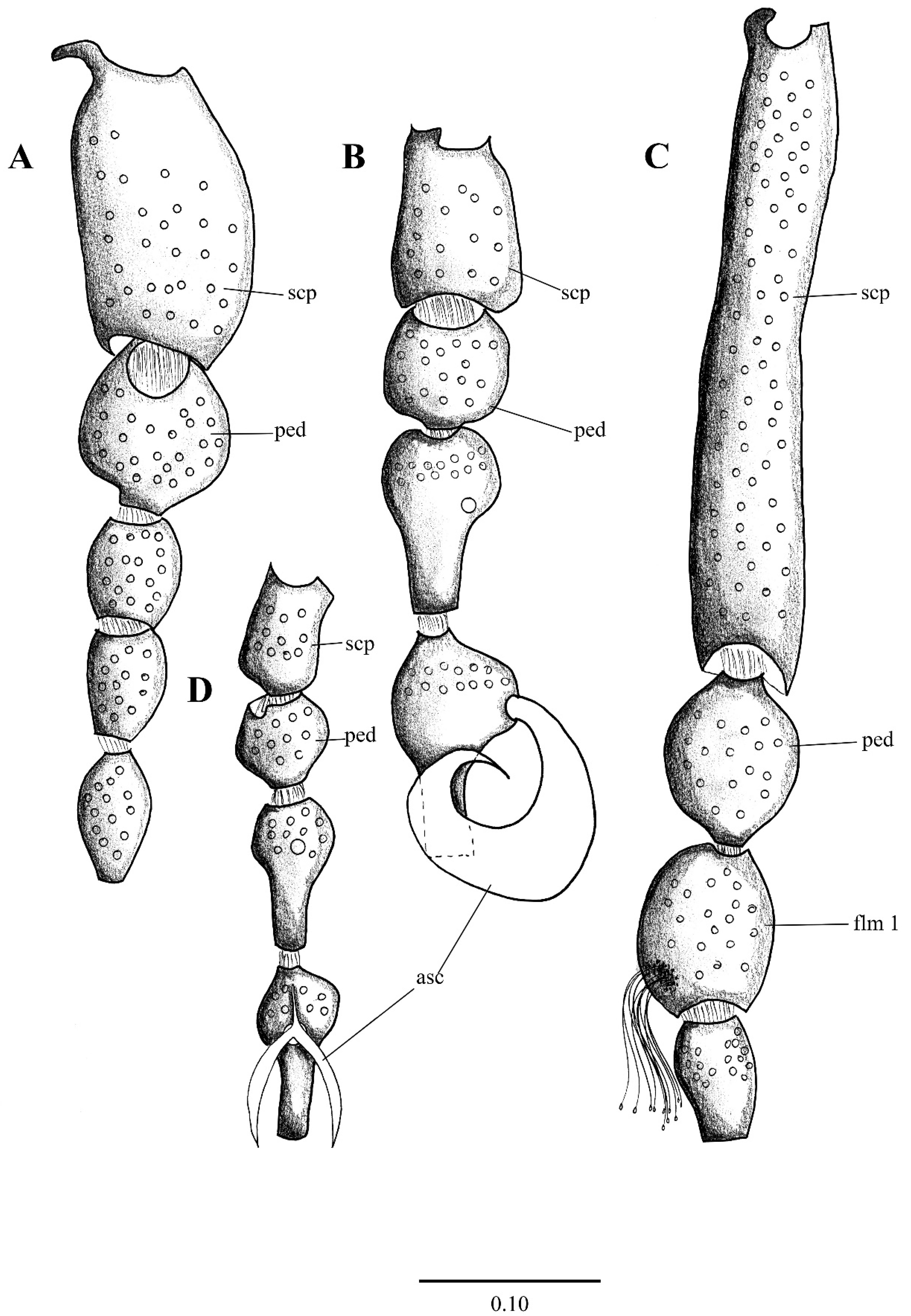
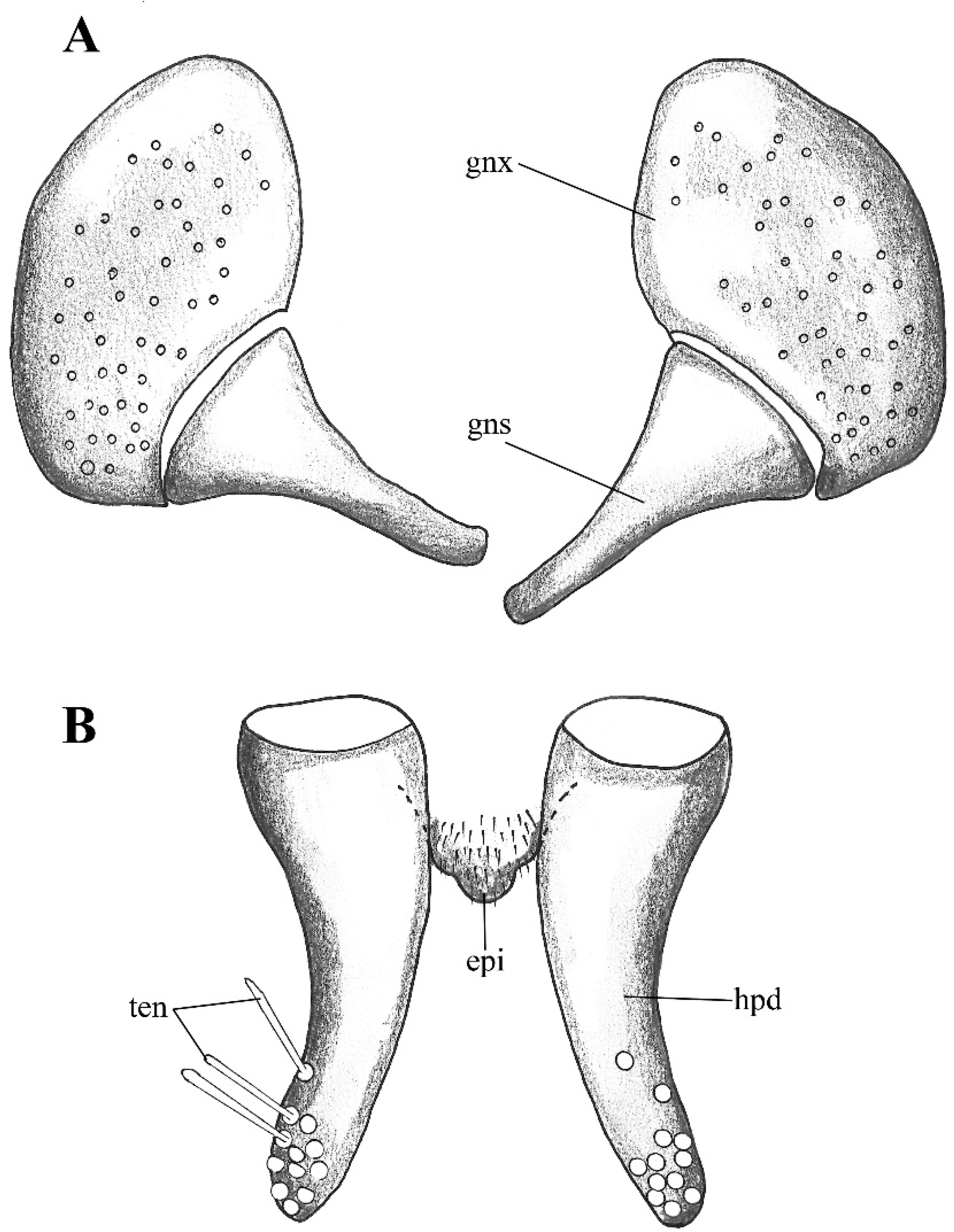

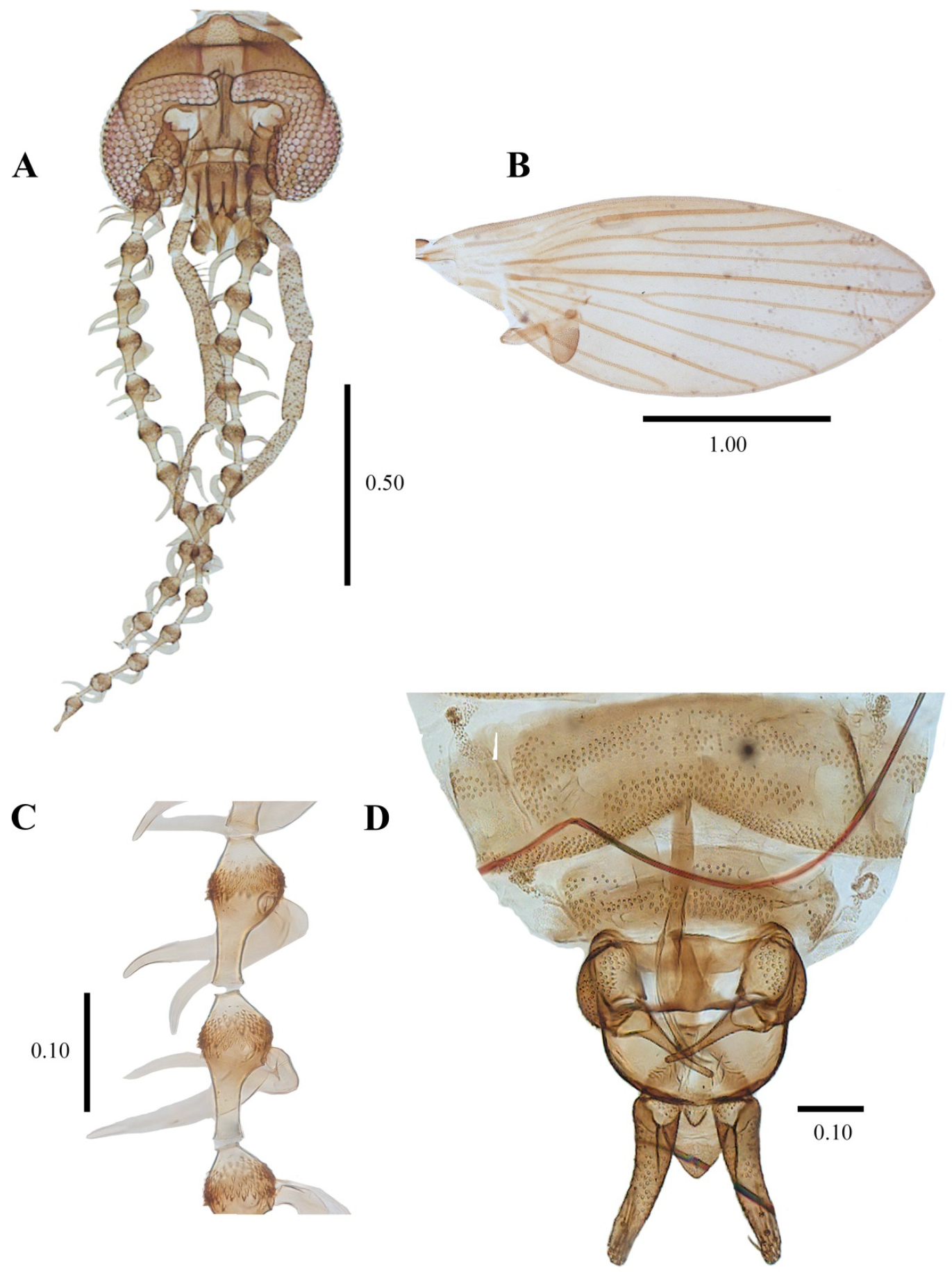
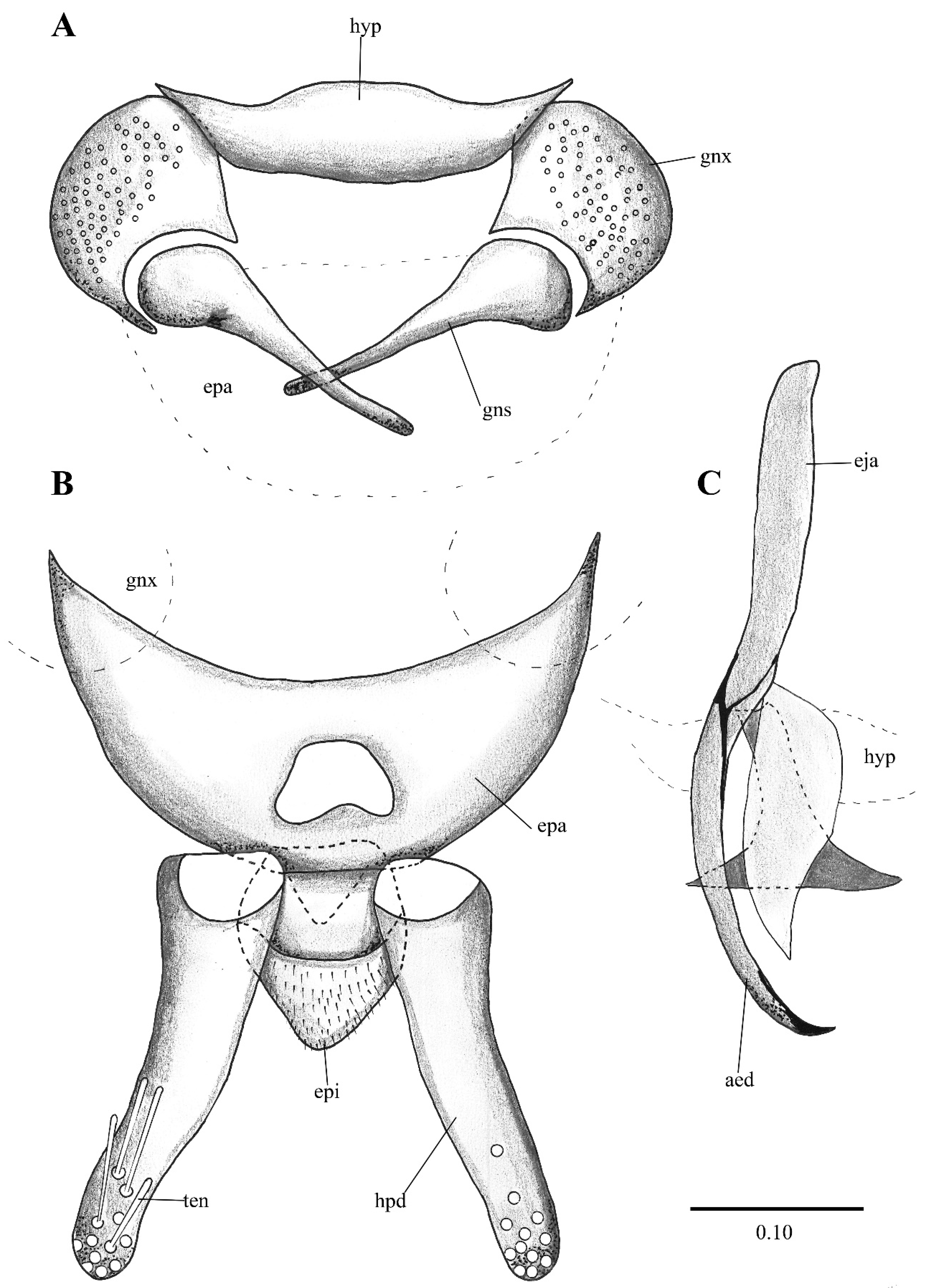



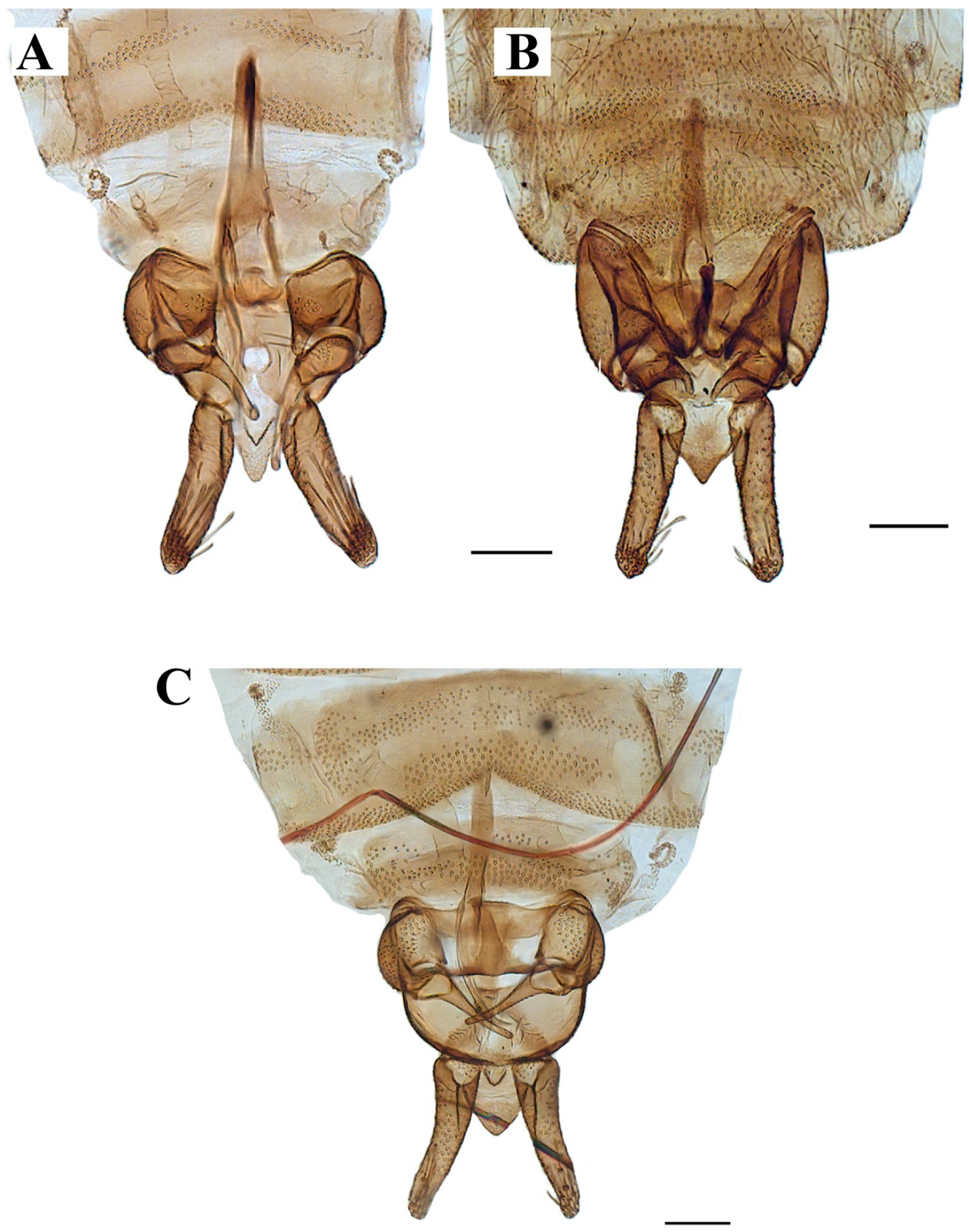
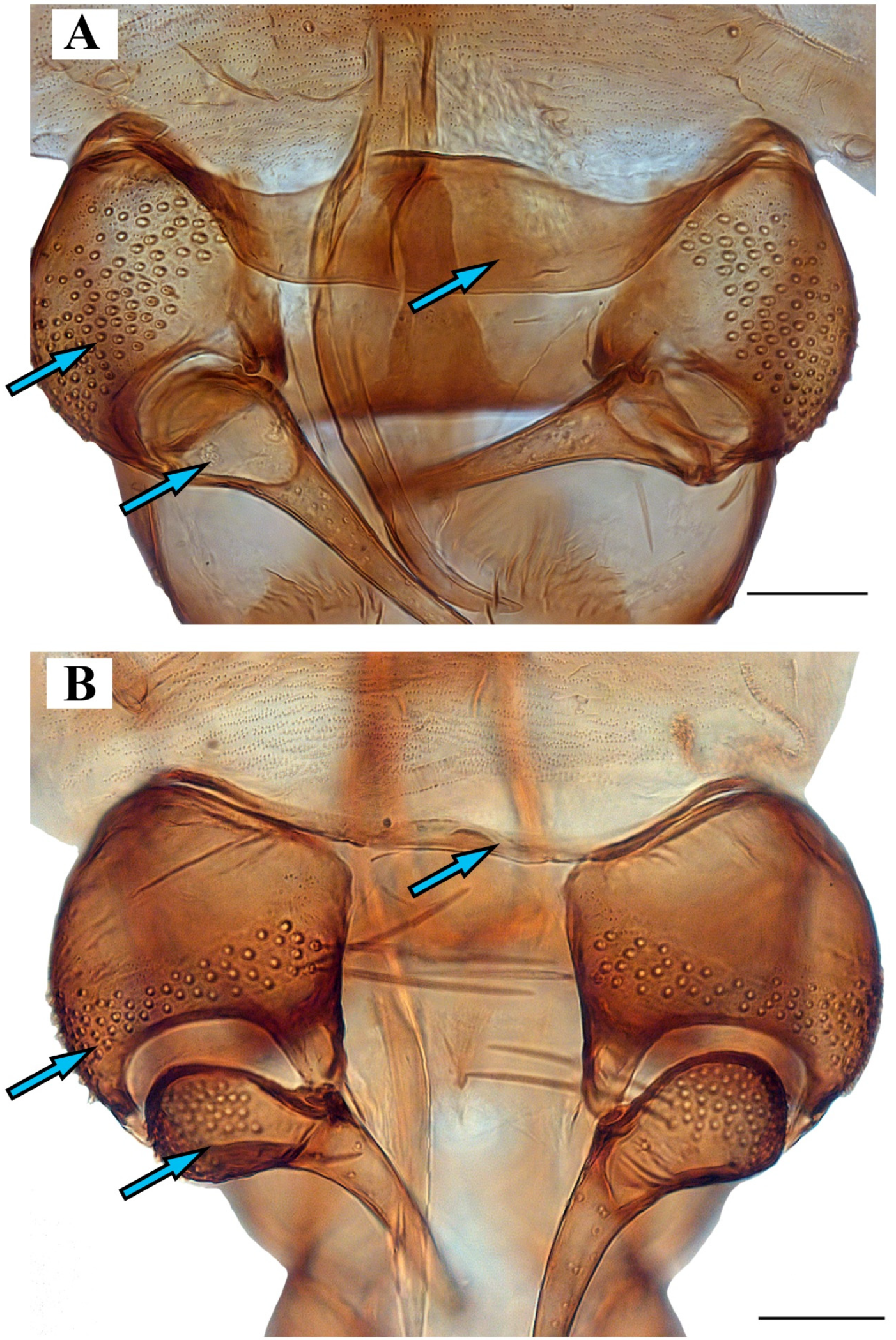
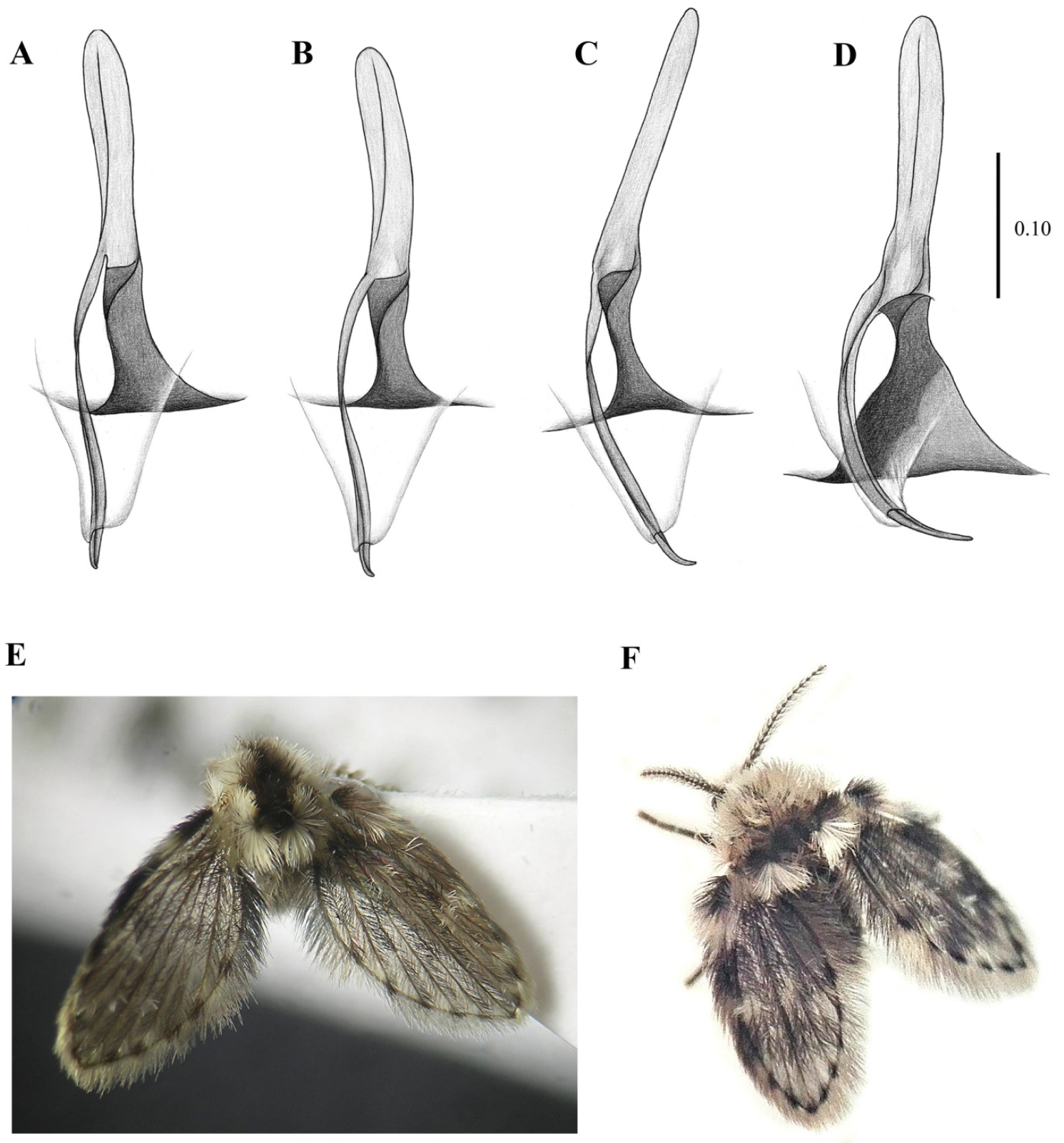


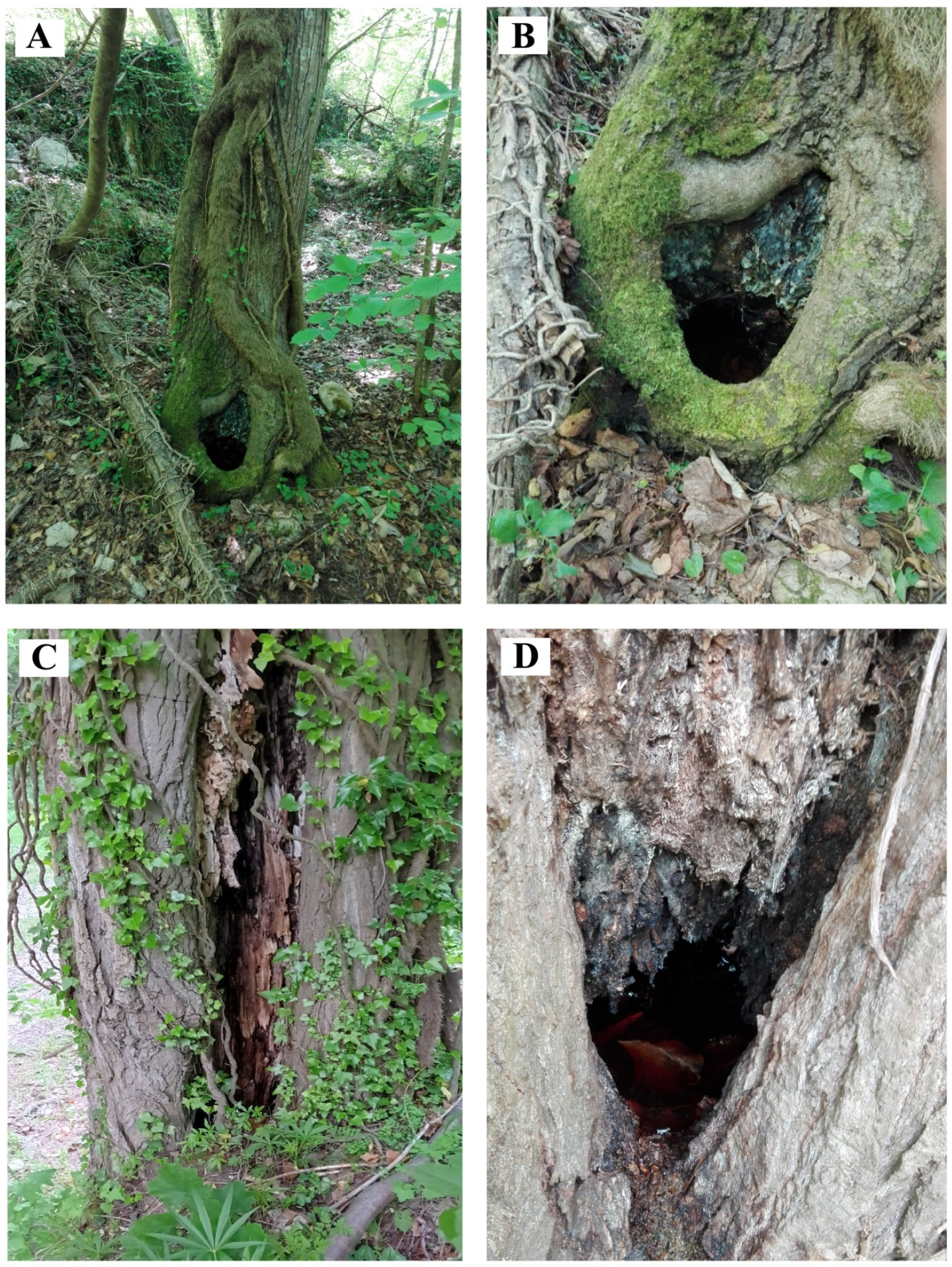
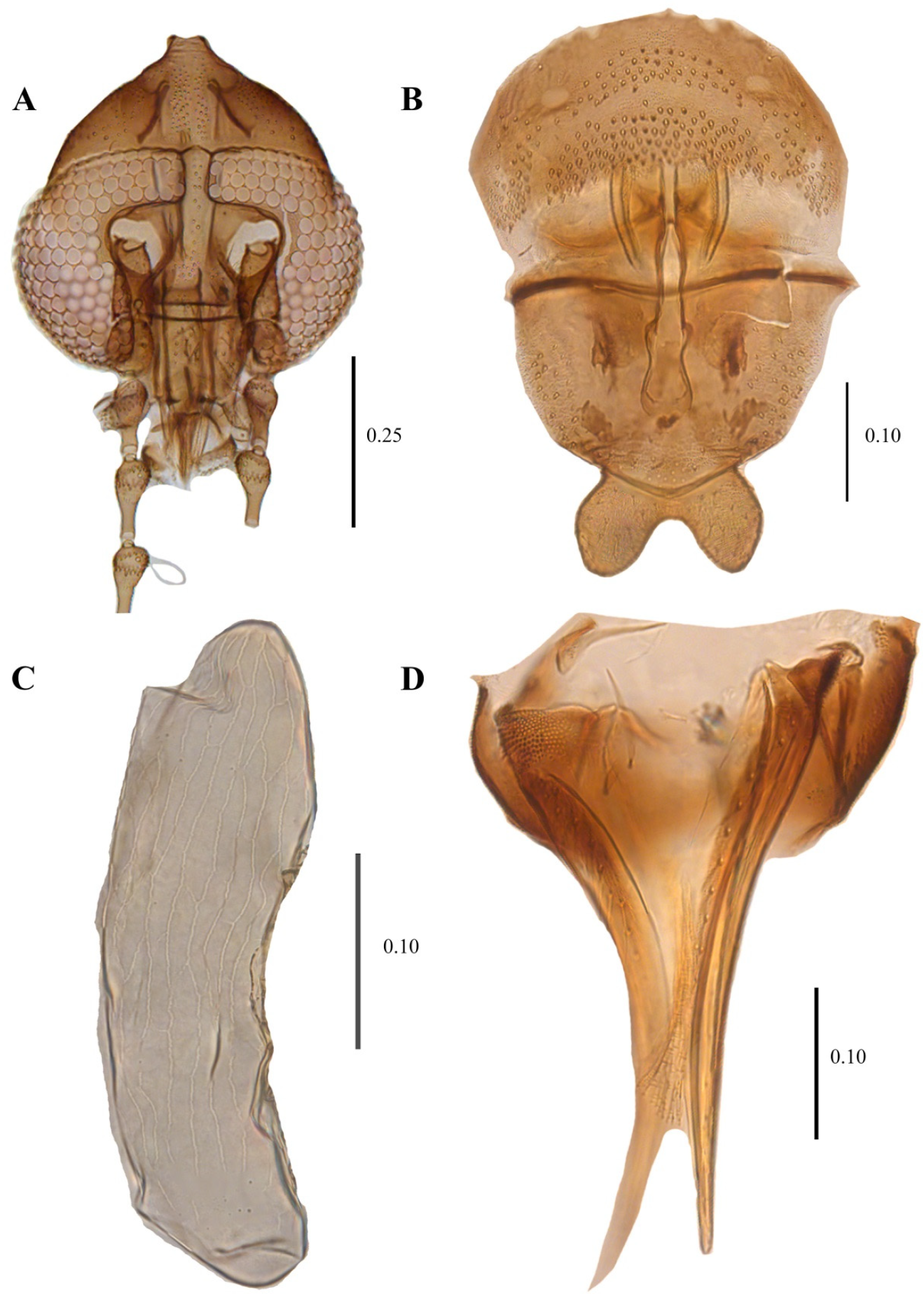

Publisher’s Note: MDPI stays neutral with regard to jurisdictional claims in published maps and institutional affiliations. |
© 2022 by the authors. Licensee MDPI, Basel, Switzerland. This article is an open access article distributed under the terms and conditions of the Creative Commons Attribution (CC BY) license (https://creativecommons.org/licenses/by/4.0/).
Share and Cite
Jaume-Schinkel, S.; Morelli, A.; Kvifte, G.M.; Mengual, X. What’s Inside the Hole? A Review of European Dendrolimnetic Moth Flies (Diptera: Psychodidae: Psychodinae). Diversity 2022, 14, 532. https://doi.org/10.3390/d14070532
Jaume-Schinkel S, Morelli A, Kvifte GM, Mengual X. What’s Inside the Hole? A Review of European Dendrolimnetic Moth Flies (Diptera: Psychodidae: Psychodinae). Diversity. 2022; 14(7):532. https://doi.org/10.3390/d14070532
Chicago/Turabian StyleJaume-Schinkel, Santiago, Alessio Morelli, Gunnar Mikalsen Kvifte, and Ximo Mengual. 2022. "What’s Inside the Hole? A Review of European Dendrolimnetic Moth Flies (Diptera: Psychodidae: Psychodinae)" Diversity 14, no. 7: 532. https://doi.org/10.3390/d14070532
APA StyleJaume-Schinkel, S., Morelli, A., Kvifte, G. M., & Mengual, X. (2022). What’s Inside the Hole? A Review of European Dendrolimnetic Moth Flies (Diptera: Psychodidae: Psychodinae). Diversity, 14(7), 532. https://doi.org/10.3390/d14070532






